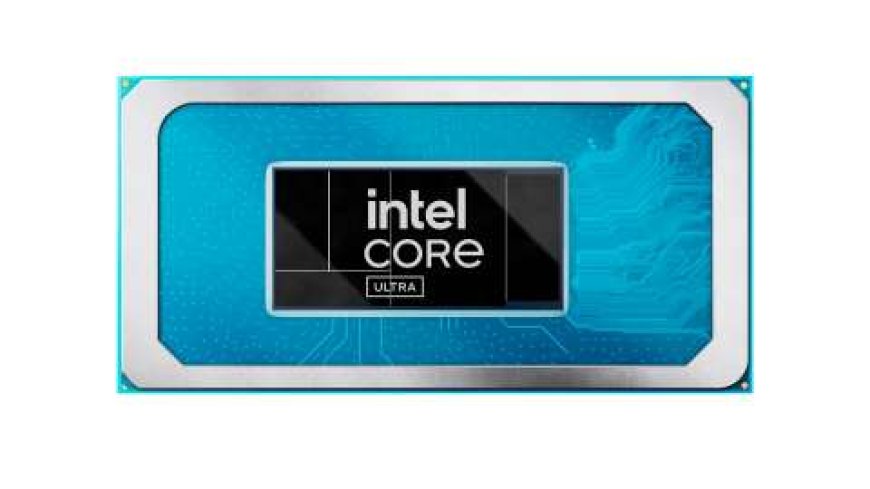Intel's Core Ultra H and U-Series Processors
Intel, a leader in the semiconductor industry, recently introduced its first mobile processors built on the much-anticipated Meteor Lake platform: the Core Ultra H and Core Ultra U series. This release marks a significant stride in integrating advanced technologies like AI and Arc graphics into ultra-thin notebooks.

Core Ultra H Series: A Leap in Performance for Ultra-Portable Notebooks
Overview of the Ultra H Series
The Core Ultra H series, designed for ultra-portable notebooks, includes four SKUs. These are categorized into two main types: the Ultra 7 with 16 cores (6 Performance cores + 8 Efficiency cores + 2 Low Power cores) and the Ultra 5 with 14 cores (4 Performance cores + 8 Efficiency cores + 2 Low Power cores). All models operate at a base Thermal Design Power (TDP) of 28 Watts, with a maximum turbo TDP of up to 115 Watts. This combination offers a balance of high performance and energy efficiency, making them suitable for slim notebooks that require robust computing and graphics capabilities.
Also check Yamaha R-N602: The Perfect Blend of Classic and Modern Audio Excellence
Enhanced Performance and Graphics
The Ultra H series stands out for its capacity to deliver enhanced computing and graphics performance within a compact form factor. This makes them ideal for users who seek power-efficient, high-performance computing in a portable design.
Core Ultra U Series: Optimized for Ultra-Thin Notebooks
Specifications of the Ultra U Series
The Core Ultra U series comprises four SKUs, featuring a base/turbo TDP of 15/57 Watts. This series includes two Ultra 7 and two Ultra 5 models, each with variations in Performance cores, Efficiency cores, and integrated Arc Xe graphics frequencies. The processors in this series are equipped with 10 CPU cores – two for performance and eight for efficiency – catering specifically to lower-powered, ultra-thin notebooks.
Focus on Efficiency and Graphics
Intel's Ultra U series processors emphasize efficiency without compromising on graphics capabilities. This makes them a fitting choice for consumers who prioritize battery life and portability but still require competent graphical performance.
Meteor Lake: Power-Efficient and AI-Focused SoC Architecture
Introduction to Meteor Lake
Meteor Lake represents Intel's first foray into a tile-based System on Chip (SoC) architecture, signifying a shift towards power-efficient and AI-focused chips in the mobile market. This architecture, launched with the Core Ultra H and U families, includes two new Low Power Island (LP-E) cores for handling low-intensity workloads and two Neural Compute Engines within the Intel AI Neural Processing Unit (NPU), specifically designed for generative AI inferencing.
The Tile-Based Approach
Meteor Lake's SoC architecture is composed of four interconnected tiles: compute, graphics, SoC, and I/O. This chiplet-based design, a departure from traditional monolithic processors, utilizes Intel's Foveros 3D packaging technology. The CPU tile, built on Intel's advanced EUV-based Intel 4 node, promises significant gains in performance and energy efficiency compared to the Intel 7 process. The GPU, SoC, and I/O tiles employ a combination of different process nodes, including external ones, to optimize functionality and efficiency.
Advancements in the Meteor Lake Architecture
The Meteor Lake SoC architecture houses Redwood Cove Performance (P) cores and Crestmont Efficiency (E) cores in the compute tile. The SoC tile integrates the LP-E core, designed for low-intensity tasks. This energy-efficient approach, combined with the always-active nature of the SoC tile, results in minimal energy consumption for the LP-E cores.
Conclusion: The Future of Ultra-Portable Computing
Intel's release of the Core Ultra H and U series processors marks a significant advancement in the field of ultra-portable computing. With the introduction of the Meteor Lake platform, Intel not only addresses the current demands for high-performance, energy-efficient, and AI-capable devices but also sets a new standard for future innovations in the mobile processor market. The Core Ultra H and U series, with their cutting-edge chiplet-based architecture, AI-focused features, and efficient power management, exemplify Intel's commitment to pushing the boundaries of technology in ultra-thin notebooks.


































